Changi Museum
Changi Prison Museum is located near the junction of Tampines and Changi Roads. It was moved here from its original location outside Changi Prison in 1991, the land there being required for expansion work.
The museum contains drawings, paintings and artifacts from the Prison’s days as internment and P.O.W. camps. It also contains a replica POW Chapel. One of the original P.O.W. Chapels from Changi was taken to Australia after the war, and in 1988 was erected in the grounds of the Royal Military College, Duntroon, Canberra.
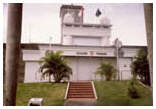 In 1936, the British built Changi Prison hold 450 prisoners. In February 1942, the Japanese made 3,500 civilians, men, women and children walk to the prison to commence an internment from which many would not return. The men made the journey first, and when the women and children arrived, they were kept segregated. Only on rare occasions did the Japanese allow men, women and children to meet. In 1944 all the surviving internees were moved to Sime Road Camp to make room for POWs from Changi and Selarang. At Sime Road, the conditions were so bad that many more did not live to see liberation. On 5th September 1945, the relieving 5th Indian Division arrived outside the prison to find some 17,000 former P.O.W. waiting for them.
In 1936, the British built Changi Prison hold 450 prisoners. In February 1942, the Japanese made 3,500 civilians, men, women and children walk to the prison to commence an internment from which many would not return. The men made the journey first, and when the women and children arrived, they were kept segregated. Only on rare occasions did the Japanese allow men, women and children to meet. In 1944 all the surviving internees were moved to Sime Road Camp to make room for POWs from Changi and Selarang. At Sime Road, the conditions were so bad that many more did not live to see liberation. On 5th September 1945, the relieving 5th Indian Division arrived outside the prison to find some 17,000 former P.O.W. waiting for them.
The prison was demolished in 2005. The main gate has been moved to the western curtain wall alongside Changi Road, and both have been preserved as a memorial.
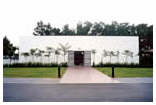

The somewhat stark edifice of the Changi Prison Museum . The building is rectangular with a central courtyard. Despite the stark appearance, the more you look at it, the better it seems. Outside is a Memorial Wall .
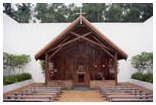
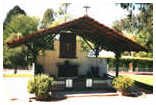 Left is the replica P.O.W. Chapel in the museum’s courtyard. Right is the original P.O.W. Chapel in Australia. The replica Chapel is representative of the many chapels built by POWs in Singapore and Malaya. The replica is not just a museum exhibit, religious services are regularly held in it. It is also a quiet place of prayer for visitors, former POWs and internees, and the relatives of those who suffered and died at the hands of the Japanese.
Left is the replica P.O.W. Chapel in the museum’s courtyard. Right is the original P.O.W. Chapel in Australia. The replica Chapel is representative of the many chapels built by POWs in Singapore and Malaya. The replica is not just a museum exhibit, religious services are regularly held in it. It is also a quiet place of prayer for visitors, former POWs and internees, and the relatives of those who suffered and died at the hands of the Japanese.
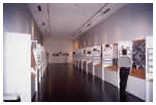
The museum contains a range of exhibits - pictures, artifacts and audio visual displays, and has a souvenir shop. Along one corridor are full size replicas of the Changi Murals. A facsimile of the Japanese Surrender Document is also on display.
